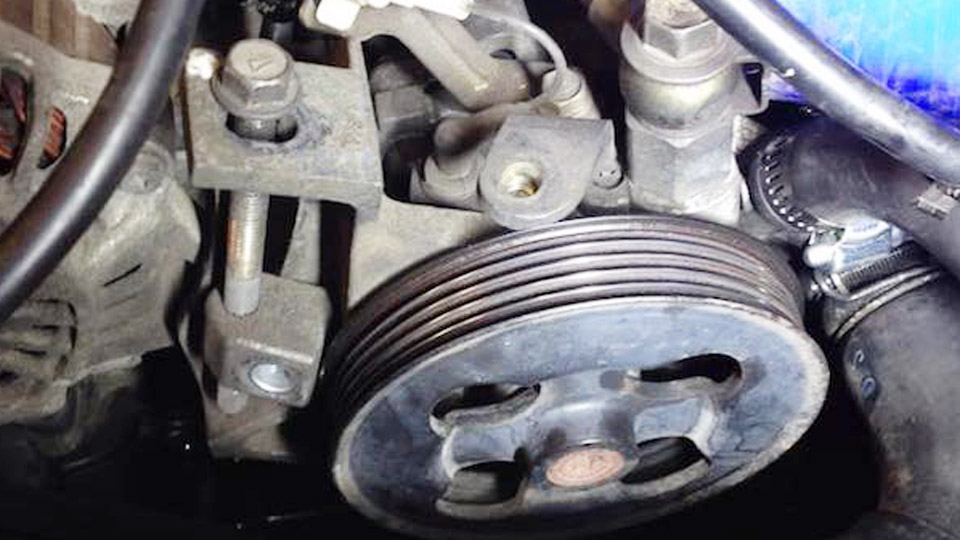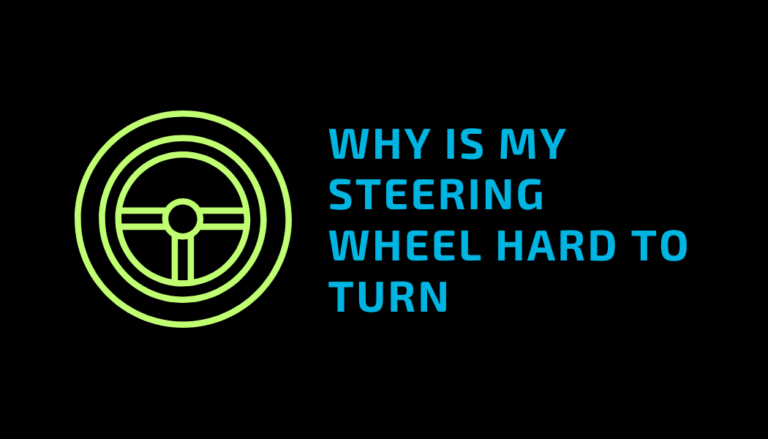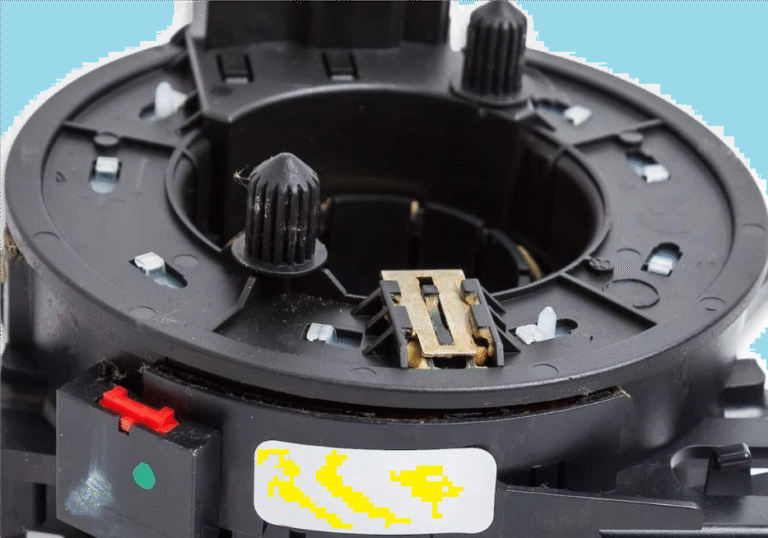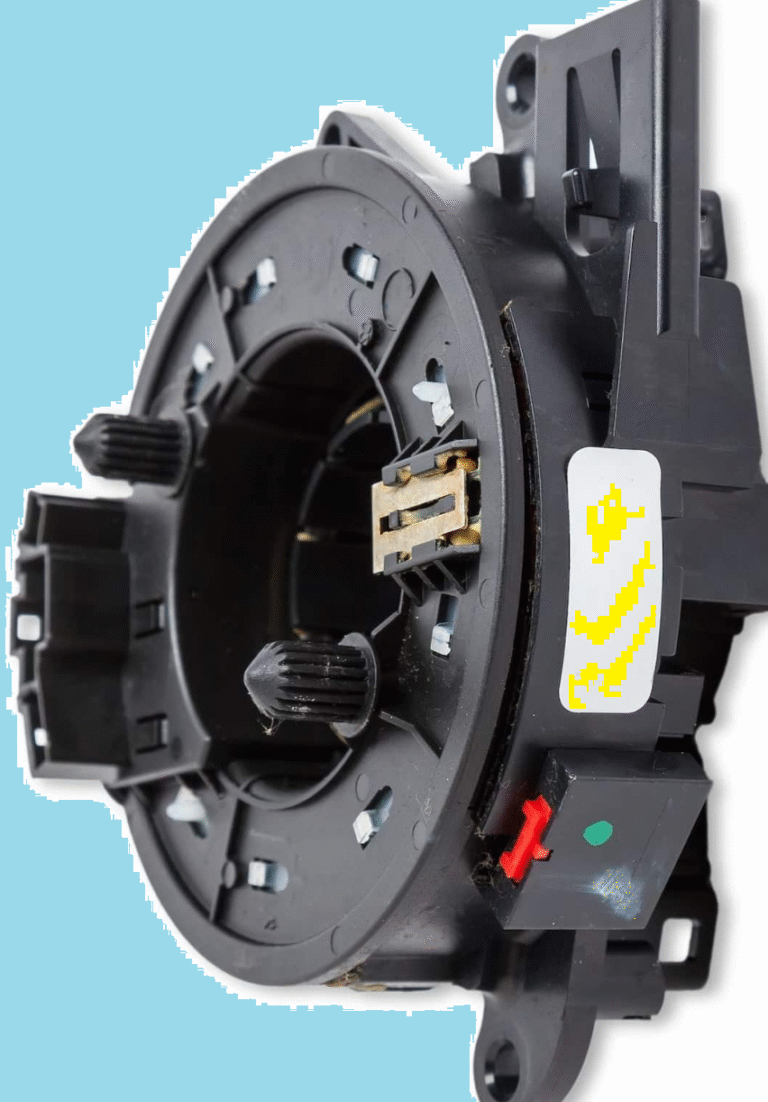I remember chasing down a rough idle in my car that just didn’t make sense. I’d cleaned the throttle body, checked for vacuum leaks, replaced spark plugs—everything seemed fine. But the idle still dipped and stumbled, especially when turning the wheel at a stop. That’s when a seasoned mechanic friend suggested something I hadn’t even considered: the power steering pump.
At first, I was skeptical. I always thought of the power steering pump as something that only affected steering—not the engine’s idle. But after digging in and eventually replacing the failing pump, the difference was like night and day. The rough idle smoothed out, and everything ran more consistently.
I’ll share my firsthand experience and explain how a bad power steering pump can cause a rough idle, why it happens, and the signs you should watch for. If you’ve been chasing an idle issue with no luck, your steering system might be the last place you’d expect—but the right place to look.

subarupartsplus
Understanding the Power Steering Pump
First things first, let’s talk about what a power steering pump actually does. If you’ve ever driven an old car without power steering, you know it’s like arm-wrestling a gorilla to make a turn. The power steering pump is what makes turning the wheel feel effortless.
It’s a small but crucial part of your car’s steering system, pumping hydraulic fluid to create the pressure needed to move the steering rack or gearbox. Without it, you’d be sweating every time you parallel park.
The pump is usually bolted to the side of the engine and powered by a belt—often the serpentine belt—that’s driven by the engine’s crankshaft. This connection is key because it means the pump relies on the engine to do its job.
I remember working on an old pickup where the belt was so worn it squealed like a banshee every time the driver turned the wheel. That’s a clue the pump and engine are working together, and if something’s off with the pump, it could affect how the engine runs.
What’s a Rough Idle, Anyway?
If your car’s idling rough, you know it. It’s that shaky, uneven feeling when you’re stopped at a light or in traffic. The engine might stutter, the RPMs might bounce around, or the whole car might vibrate enough to rattle your keys in the console.
I’ve had cars come into the shop where the idle was so rough it felt like the engine was trying to escape. One time, a buddy brought in his sedan, and we joked it felt like sitting on a washing machine during the spin cycle.
A rough idle happens when the engine isn’t running smoothly at rest. Normally, your engine should hum along steadily, keeping the RPMs consistent. When it doesn’t, something’s throwing it off balance.
Common culprits include spark plugs, fuel issues, or air leaks, but could a bad power steering pump cause rough idle too? To answer that, we need to look at how a failing pump might mess with the engine’s rhythm.
How a Power Steering Pump Could Affect Your Idle
The power steering pump doesn’t directly control the engine’s combustion, but it’s connected to the engine through that belt I mentioned. If the pump’s not working right, it can put extra strain on the engine, kind of like trying to jog while pulling a heavy wagon. That extra load can make the engine struggle, especially at low RPMs like when you’re idling.
Here’s how it might happen. A bad power steering pump could have worn bearings, a seized rotor, or low fluid levels. Any of these can make the pump harder to turn, which drags on the engine.
I saw this once with a customer’s SUV—the pump was starting to seize, and every time they turned the wheel at a stop, the engine would stumble and nearly stall. It wasn’t the only issue (a dirty throttle body was also to blame), but the pump was definitely making things worse.
Here are a few ways a failing pump could contribute to a rough idle:
Seized or Stiff Pump: If the pump’s internals are shot, it can resist turning, forcing the engine to work harder and potentially causing RPM fluctuations.
Leaking Fluid: Low fluid levels mean the pump isn’t working efficiently, which can create inconsistent drag on the engine.
Bad Bearings: Worn bearings can cause the pump to wobble or grind, adding uneven stress to the engine.
Belt Problems: If the pump’s pulley is misaligned or the belt is slipping, it can affect other accessories like the alternator, which might indirectly mess with the idle.
That said, a power steering pump causing a rough idle isn’t something I see every day. It’s more likely that something else—like a misfire or a sensor issue—is the main problem. But when you’re troubleshooting, you’ve got to consider every possibility.
Signs Your Power Steering Pump Is Failing
Before you blame the pump for your rough idle, let’s go over the signs of a failing power steering pump. I’ve dealt with enough of these to know they’re usually pretty obvious once you know what to look for. Here’s what to check:
Whining Noise: A bad pump often makes a high-pitched whine or groan, especially when you turn the wheel. I once worked on a car where the noise was so loud it sounded like a jet engine warming up.
Hard Steering: If turning the wheel feels like a workout, the pump might not be generating enough pressure.
Fluid Leaks: Look under the car for red or brownish puddles. Power steering fluid leaks are a clear sign something’s wrong with the pump or its hoses.
Vibrations: A pump with bad bearings can cause vibrations you might feel through the steering wheel or even the whole car.
If you’re seeing these symptoms alongside a rough idle, the pump could be part of the equation. But if your steering feels fine and there’s no noise, you’re probably dealing with a different issue.
Other Causes of a Rough Idle
Since a bad power steering pump isn’t the most common cause of a rough idle, let’s talk about what else might be going on. Cars are complex, and I’ve learned the hard way that the problem isn’t always where you first look. Here are some of the usual suspects I check when a car comes in with a shaky idle:
Spark Plugs and Ignition Coils: Worn plugs or failing coils can cause misfires, making the engine sputter. I’ve replaced plugs that were so fouled they looked like they’d been dipped in tar.
Fuel System Issues: A clogged fuel injector or a weak fuel pump can mess with the engine’s fuel supply, leading to uneven running.
Vacuum Leaks: A cracked hose or loose intake manifold can let extra air into the engine, throwing off the air-fuel mix.
Mass Airflow Sensor (MAF): A dirty or failing MAF sensor can confuse the engine’s computer, causing all sorts of trouble, including a rough idle.
Idle Air Control Valve: This valve regulates airflow at idle, and if it’s clogged, the engine might struggle to stay steady.
Sometimes, these issues can mimic a power steering pump problem. For example, a vacuum leak might make the idle worse when you turn the wheel because the engine’s already struggling. That’s why diagnosing a rough idle is like playing detective—you’ve got to follow the clues.
How to Diagnose the Problem
If your car’s idling rough and you’re wondering if the power steering pump is to blame, here’s how I’d tackle it. Diagnosing car problems is one of my favorite parts of working on cars—it’s like solving a mystery. Here’s a step-by-step approach based on what I do in the garage:
Listen for Pump Noises: Start the car and turn the wheel back and forth. If you hear a whine or groan, the pump might be struggling. No noise usually means the pump’s okay.
Check the Fluid: Find the power steering fluid reservoir under the hood—it’s usually a small plastic container with a cap marked “power steering.” The fluid should be clean and at the right level. If it’s low or dirty, you might have a leak.
Inspect the Belt: Look at the serpentine belt that drives the pump. Is it frayed, loose, or slick with fluid? A bad belt can cause all kinds of problems.
Test Steering Feel: Does the wheel feel stiff or jerky? If steering is harder than usual, the pump could be failing.
Watch the Idle: Notice when the rough idle happens. Does it get worse when you turn the wheel? That could point to the pump adding extra load to the engine.
If the pump seems fine, move on to checking spark plugs, vacuum hoses, and sensors. I always keep a cheap scan tool in my toolbox—it’s great for pulling error codes that can point you in the right direction.
One time, a code led me straight to a bad oxygen sensor that was causing a rough idle. Saved me hours of guesswork.
Will Replacing the Pump Fix the Idle?
If you’ve confirmed the power steering pump is bad, will replacing it smooth out your idle? It depends. If the pump was dragging on the engine—say, because it was seizing up—a new pump could make a big difference.
I worked on a minivan once where the pump was so bad it was stalling the engine at stoplights. After swapping it out, the idle was much smoother, though we also cleaned the throttle body to be safe.
But if the rough idle is coming from something else, like a misfire or a bad sensor, a new pump won’t help. That’s why I always tell folks to diagnose carefully before spending money on parts.
I learned that lesson years ago when I replaced a perfectly good alternator thinking it was causing a charging issue—turns out, it was just a loose wire.
Here’s a quick table to give you an idea of what a power steering pump replacement might cost:
| Component | Estimated Cost | Labor Time | DIY Difficulty |
|---|---|---|---|
| Power Steering Pump | $100–$350 | 2–4 hours | Moderate |
| Power Steering Fluid | $10–$25 | N/A | Easy |
| Serpentine Belt (if needed) | $20–$60 | 1–2 hours | Moderate |
These numbers are based on my experience with common cars like sedans and SUVs. Costs can vary depending on your vehicle and where you get the work done. If you’re handy, replacing the pump yourself can save you some cash, but it’s not a job for beginners.
Practical Tips for Handling a Rough Idle
Whether it’s the power steering pump or something else causing your rough idle, here are some tips I’ve picked up over the years to keep your car in top shape. These have saved me and my buddies plenty of time and money:
Start with the Basics: Check your air filter, spark plugs, and fluid levels before diving into bigger repairs. A $15 air filter can sometimes fix what feels like a major problem.
Stay on Top of Maintenance: Regular oil changes, tune-ups, and belt checks can prevent a lot of issues. I check my car’s fluids every couple of months to catch problems early.
Listen to Your Car: Whining, squealing, or rattling noises are your car’s way of talking to you. Don’t ignore them—addressing them early can save you a big repair bill.
Find a Trustworthy Mechanic: If you’re not sure what’s wrong, take your car to someone you trust. My go-to mechanic has been a lifesaver for tricky problems.
Drive Smart: If your idle’s rough, avoid long trips until you’ve got it sorted. You don’t want to get stuck on the side of the road.
Solving the Rough Idle Puzzle
A rough idle can be a real head-scratcher, but it’s a problem you can tackle with a little know-how and patience. While a bad power steering pump might not be the first thing you think of, it can play a role if it’s putting extra strain on the engine.
By checking the pump, fluid, and belt, you can figure out if it’s part of the issue or if you need to look elsewhere, like spark plugs or vacuum lines.
Working on cars is one of my favorite things—it’s like solving a puzzle that saves you money and keeps your ride running smoothly. Whether you’re a weekend wrench-turner or just someone who wants their car to stop shaking at stoplights, you’ve got the tools to figure this out.
FAQ
What does a rough idle feel like?
It’s when your car shakes or vibrates while stopped, like at a red light. The engine might sputter, and the RPMs could jump around, making it feel unsteady.
Can a bad power steering pump really cause a rough idle?
It’s not the most common cause, but it can happen. If the pump is seized or struggling, it can put extra load on the engine, making the idle rough, especially when turning the wheel.
How can I tell if my power steering pump is bad?
Listen for a whining noise when you turn the wheel, check for stiff steering, or look for fluid leaks under the car. Vibrations in the steering wheel can also be a clue.
What’s the cost to replace a power steering pump?
A new pump usually runs $100 to $350, plus a couple of hours of labor if you go to a shop. You’ll also need new fluid, which is cheap—about $10 to $25.
What are other reasons for a rough idle?
Things like worn spark plugs, bad fuel injectors, vacuum leaks, or a faulty mass airflow sensor are common causes. Each one messes with the engine’s air, fuel, or spark, leading to an uneven idle.
Is it safe to drive with a rough idle?
Short trips are usually okay, but don’t let it go too long. A rough idle can point to bigger issues, and driving too much could lead to a breakdown or more damage. Get it checked out soon.




